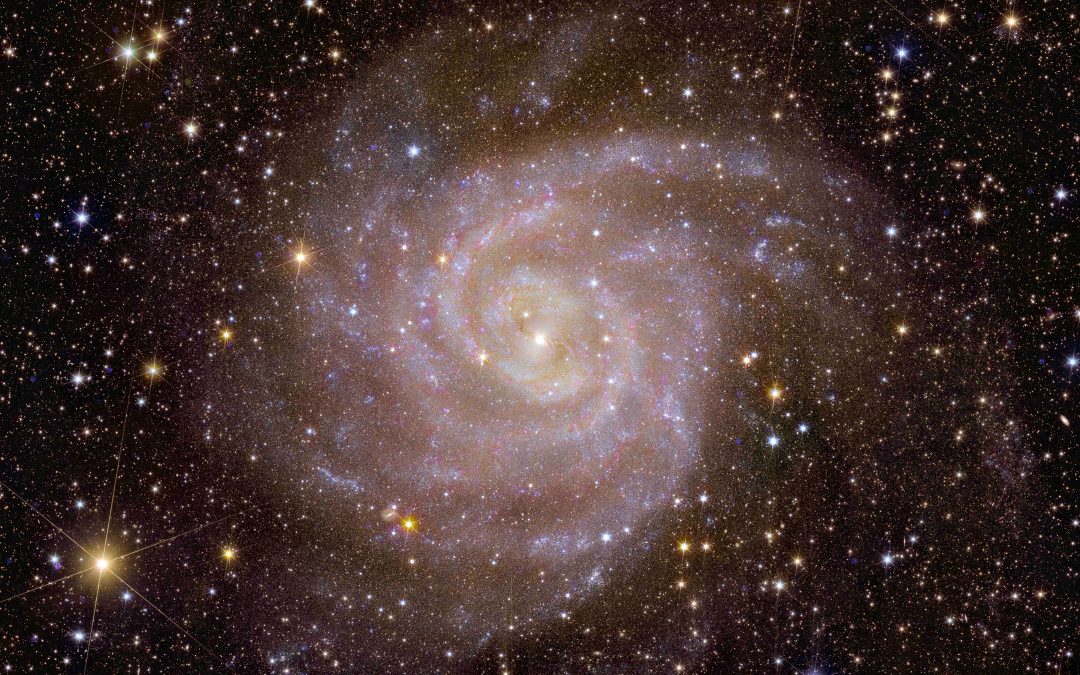The first five color images of the cosmos acquired by the Euclid Space Telescope were unveiled today, Tuesday, Nov. 7. Distinguishing them is an unprecedented resolution, capable of enhancing and making even more suggesting the celestial bodies immortalized. Built and operated by the European Space Agency (ESA), with contributions from NASA and the collaboration of the Italian Space Agency (ASI), Euclid aims to map dark matter and energy and understand how these mysterious constituents contributed to the evolution of our Universe. To do so, the telescope relies on a fundamental contribution from our country, funded by ASI and carried out by the National Institute of Astrophysics (INAF), the National Institute of Nuclear Physics (INFN) and numerous Italian universities. Many Italian industrial companies have also been involved to provide important contributions to the instrumentation and to ensure the computational support needed to analyze the large amount of data that the telescope will be able to generate. ICSC-Italian Research Center in High Performance Computing, Big Data and Quantum Computing supports the scientists involved in the mission by providing significant computational resources and personnel for the simulation and theoretical modeling activities necessary for the scientific analysis of the processed data, data useful for creating the most extensive 3-D map of the Universe ever seen and uncovering some of its hidden secrets.
Never before has a telescope, whether space or ground-based, been able to create such sharp astronomical images over such a large area of sky and to look so far into the distant Universe. The images capture disparate celestial bodies: starting with the iconic Horsehead Nebula, just 1,500 light-years away from Earth, through a star cluster and two galaxies, to the giant Perseus cluster of galaxies, 240 million light-years away from us. While portraying objects in the relatively close Universe, these images illustrate the full potential of Euclid, launched last July 1 and now orbiting 1.5 million km from us around the L2 point of gravitational equilibrium between the Sun, Earth and Moon.
Euclid, which has a telescope with a 1.2-meter diameter mirror, is tasked with investigating how dark matter and dark energy have given our Universe the appearance it has today. Ninety-five percent of our cosmos appears to be made up of these mysterious “dark” entities, but we do not understand what they are because their presence causes only small changes in the appearance and movements of things we can see. To reveal the “dark” influence on the visible Universe Euclid will observe the shapes, distances and motions of billions of galaxies up to the distance of 10 billion light-years. In this way, it will create the largest 3D cosmic map ever made. By the end of its operational life, currently expected to be around six years, Euclid will have produced images and photometric data for more than a billion galaxies and millions of galaxy spectra, data that will also be of great importance to many other areas of astrophysics.
And it is precisely in the set of efforts aimed at the scientific processing of the data that the mission will send back to Earth and at the realization of large cosmological simulations for the interpretation of these data that ICSC’s contribution lies. The Italian scientific activity for the EUCLID project, in fact, also involves the use of computing resources and personnel of the “National Research Center in HPC, Big Data and Quantum Computing,” which gathers the most advanced research computing centers on the Italian territory and involves more than 1,500 researchers from Universities and Research Institutions.
A consortium of more than 2,000 scientists from 300 institutes in 13 European countries, as well as the United States, Canada and Japan, has been set up for the Euclid mission.
Credits Image: ESA/Euclid/Euclid Consortium/NASA, image processing by J.-C. Cuillandre (CEA Paris-Saclay), G. Anselmi, CC BY-SA 3.0 IGO


